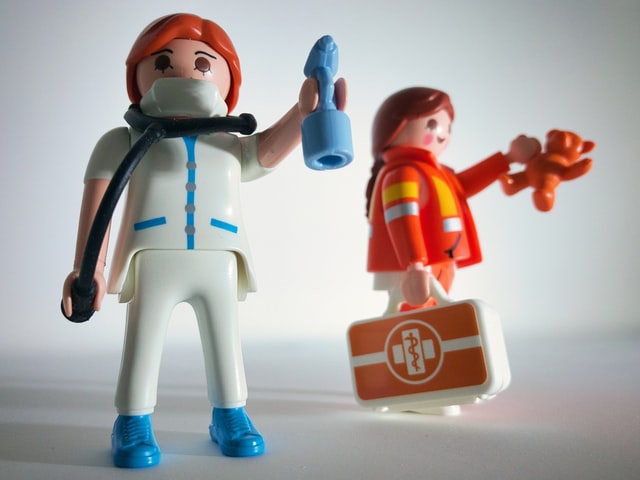An alternative way of seeing your Physiotherapist! Telehealth and how does this work?
During the current COVID-19 pandemic, providing Telehealth services become a new trend in medical and allied health professionals. This physical-contact-free way of consultation protects not only the clients but the therapist as well.
It all sounds too good to be true, but many might ask, how does this work in physiotherapy?
People often link Physiotherapy with hands-on or manual therapy. Indeed, physiotherapists usually use some sort of manual therapy modalities to assist with treatment, but we can do more than that!
It is undeniable that hands-on therapy will not be available in Telehealth consultation, however, there is still something your physiotherapist can do for you during a Telehealth consultation.
What is telehealth?
Telehealth is a digital consultation service, it allows the client to attend a digital consultation session with their therapist through a video conferencing software. This video conferencing software is not FaceTime/ Skype, it is usually a software that allows end-to-end encryption that is cloud-based. Meaning no third party software would be able to assess the meeting, so your privacy will be better protected. Depends on what software your therapist is using, it might just be as easy as clicking the link your therapist sent you then you are good to go. This digital consultation session will also be cheaper than a normal in-clinic face-to-face consultation.
To date, the compensable bodies’ coverage for Telehealth is as follow:
-
-
-
DVA (telehealth consultations can be claimable for all eligible DVA clients for the period 1 April to 30 September 2020)TAC (Telehealth consultation can be claimable for clients until 30 September 2020)
-
WorkCover (Telehealth consultation claimable if face-to-face consultation is not available, no specific date found
-
Private insurance (please refer to different guidelines for the insurance company)
-
NDIS (Telehealth consultation is covered under NDIS funding)
-
Medicare depending on each individual practice (bulk-billed may be available)
-
-
*All of these are subject to change by providing bodies, please kindly refer to their website for most up-to-date information.
What can a Physiotherapist do for you through a Telehealth consultation?
Physiotherapists are well trained to provide you with adequate education regarding your injury and give advice specific to your very case. Physiotherapists are also well trained to give you excellent ideas about modifications for your exercises or activities of daily livings. By asking you lots of questions about your injury, a physiotherapist can have a gross idea of what is happening to you, this might be confirmed by doing some specific tests, but your physiotherapist won’t be treating you blind via Telehealth. If your condition is too complex to treat via Telehealth, or the physiotherapist thinks it’s better off with a face-to-face consultation for your case, you will then be redirected to an in-clinic service if possible. Unless specified, researches had shown Telehealth physiotherapy consultation can be as effective as an in-clinic consultation in most cases.
Hands-on therapy is just one of the modalities that a physiotherapist uses in their treatment. This allows temporary reliefs for pain or discomfort, however, when face to face consultation is not an option, self-message with a tennis ball will be a possible alternative. As for specific tests, your physiotherapist will instruct you to position your camera and some of these tests can complete via Telehealth.
What do you need to prepare for a Telehealth consultation?
- All you need is a device with camera and connected to the internet. A smartphone can do if you don’t have access to a laptop computer or a webcam to your desktop computer. T
- Next, it is to dress appropriately just as you are going to an in-clinic service. If possible, wear shorts for a lower limb problem, and singlet for a shoulder or upper limb problem.
- Now, if possible, try to clear up a space for you to move freely during the consultation. As you might be asked to stand up and do certain movements. It is important to allow adequate space for yourself to avoid tripping and falling or knocking things over. It is also important that you set your device up in a stand or a pile of book, to allow yourself to have both hands and allow your therapist to see you clearly. You can try video call your family or friends to check with your set-up prior to the consultation, to allow a smoother flow in your actual consultation.
- Make sure your camera and microphone on the device are functioning properly. And check whether your reception or internet speed can support a smooth call. Simply ring your friends or family for a video call (even if they are just next door) to test these functions out. Check whether you can hear and see them clearly, and make sure they can hear and see you clearly as well.
If you have done all of the above and no problems at all, congratulations, you are good to go. Just turn up in your Telehealth appointment and we’ll look after you.
During the consultation, my therapist keeps asking me to fiddle with my camera, am I doing anything wrong?
The quick answer is no, not at all. Even if you have set your environment up perfectly prior to the session, your therapist might still be asking you to tilt your device in a certain way to allow a better angle of your camera. This is because, for some measurements or movements, the therapist needs to see you at a particular angle to allow a more accurate observation. So don’t worry, you are not doing anything wrong, it’s just that in Telehealth your physiotherapist can no longer move themselves to see better, you have to move your camera for them to allow them a better glimpse.
Conclusion
In times of current pandemic, Telehealth acts as a sweet alternative for clients and physiotherapist to continues with their consultation without exposing self into unnecessary risks. If you are feeling unwell or have any concerns about face-to-face consultation, this will be an alternative for you to keep seeing your therapist. Stay safe. Stay active. And hope this will answer some of your questions about the Telehealth service provided by a physiotherapist.



